Abstract
An increment in the number of circulating eosinophils occurred between the 11th and 14th days after infection with Ascaris suum and this increase was generally greater after a challenge infection. Continual infection with small numbers of A. suum eggs over prolonged periods resulted in circulating eosinophil levels which fluctuated and were dose-dependent. The per cent marrow eosinophils always increased after a primary infection and a greater increase usually followed a challenge infection. The maximum increment of marrow eosinophils occurred between the tenth and 12th days and preceded the rise in circulating eosinophils by 36 hours. Antihistamine therapy did not alter eosinophil responses to A. suum. Circulating eosinophilia was not usually reflected by drastic changes in differential white cell counts. However, an increase in total white cell count often followed infection with A. suum and frequently parallelled changes in eosinophil counts. Hemoglobin and P.C.V. values remained within normal limits in A. summ infected calves.
Full text
PDF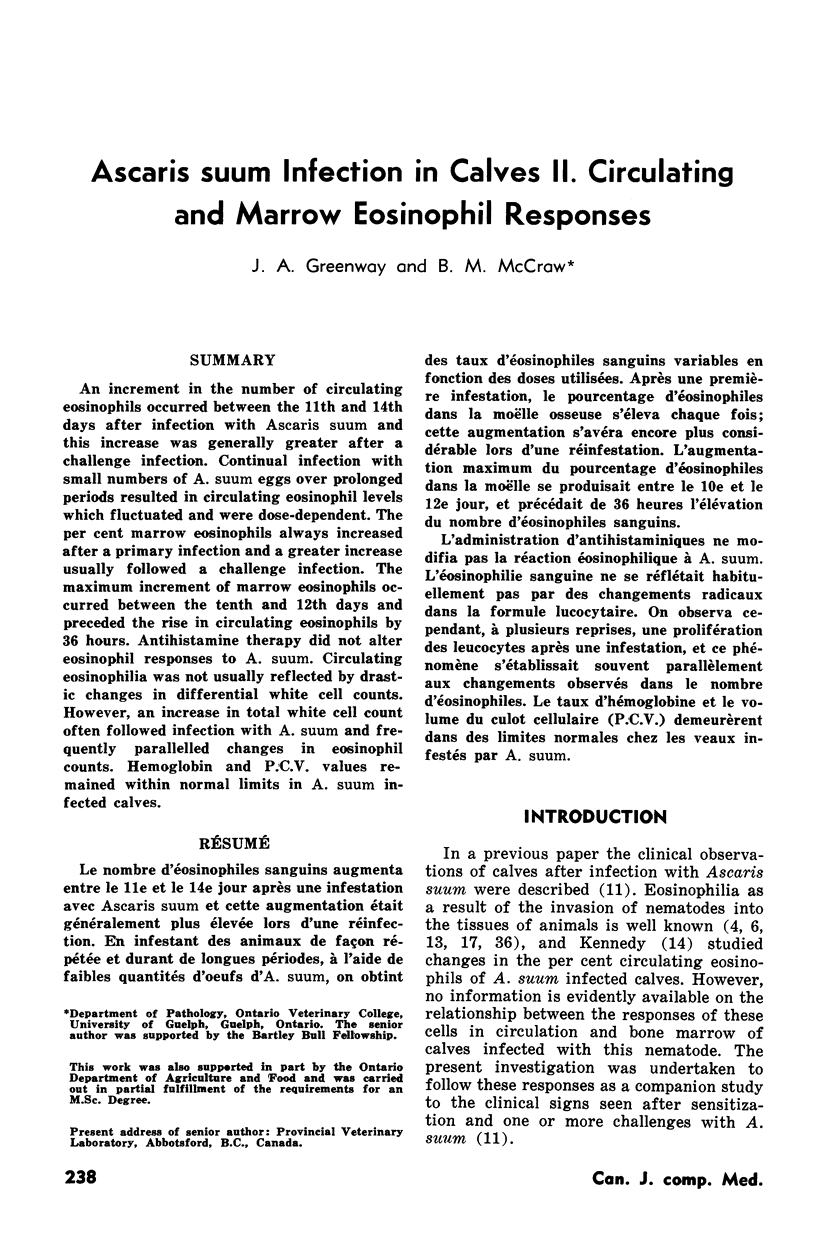
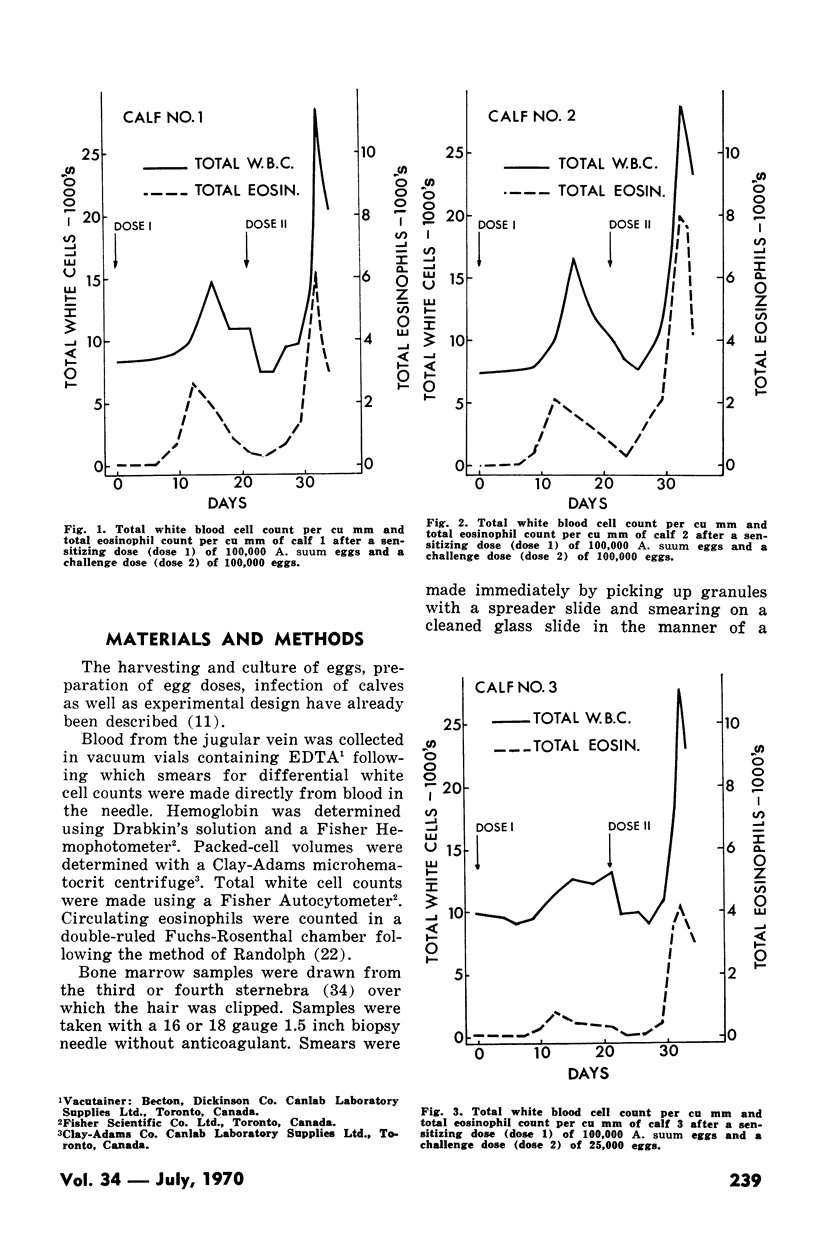
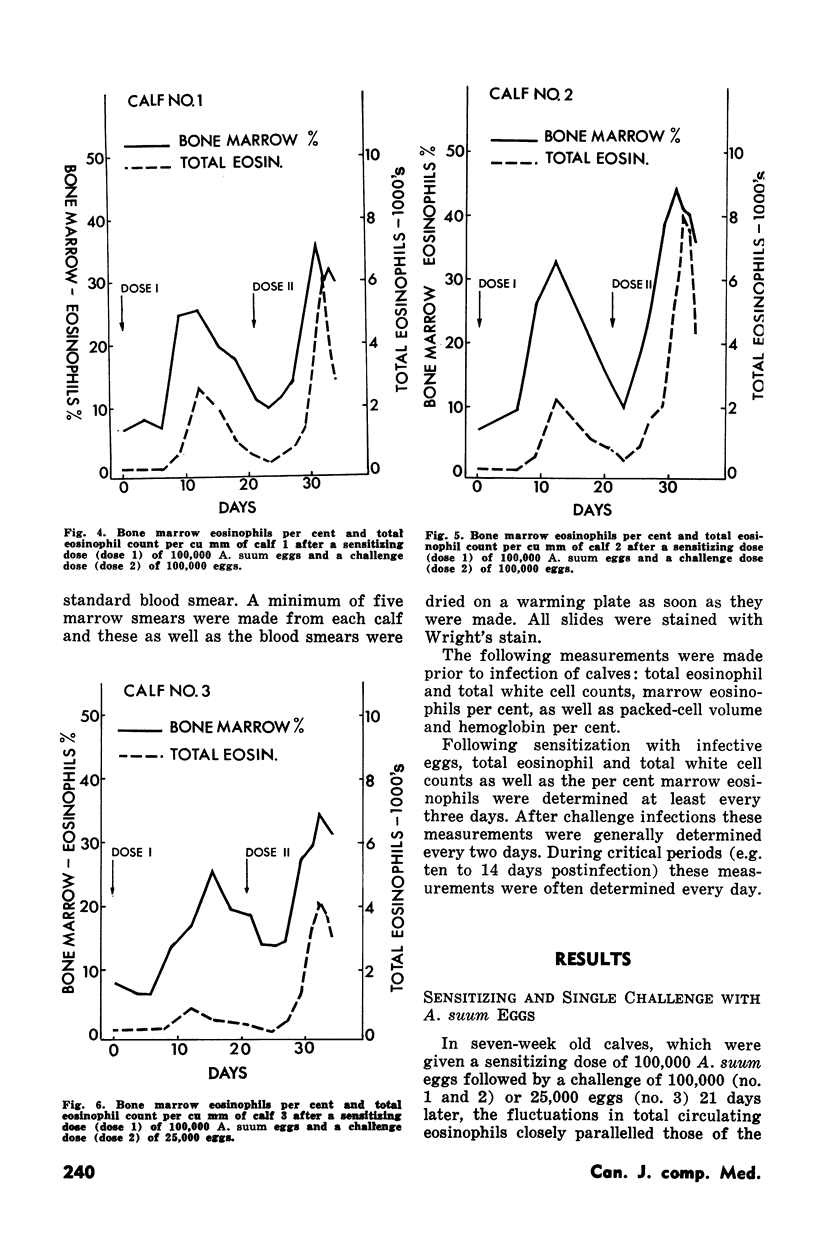
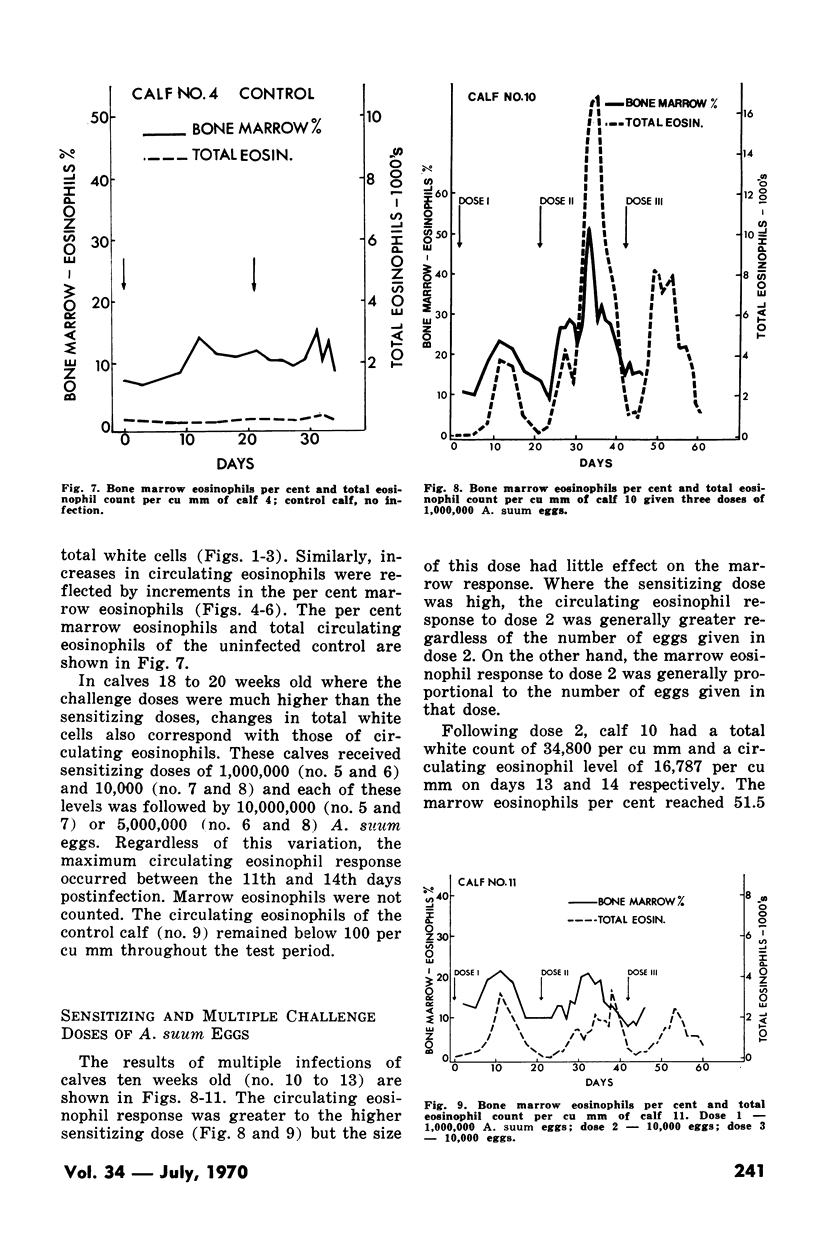
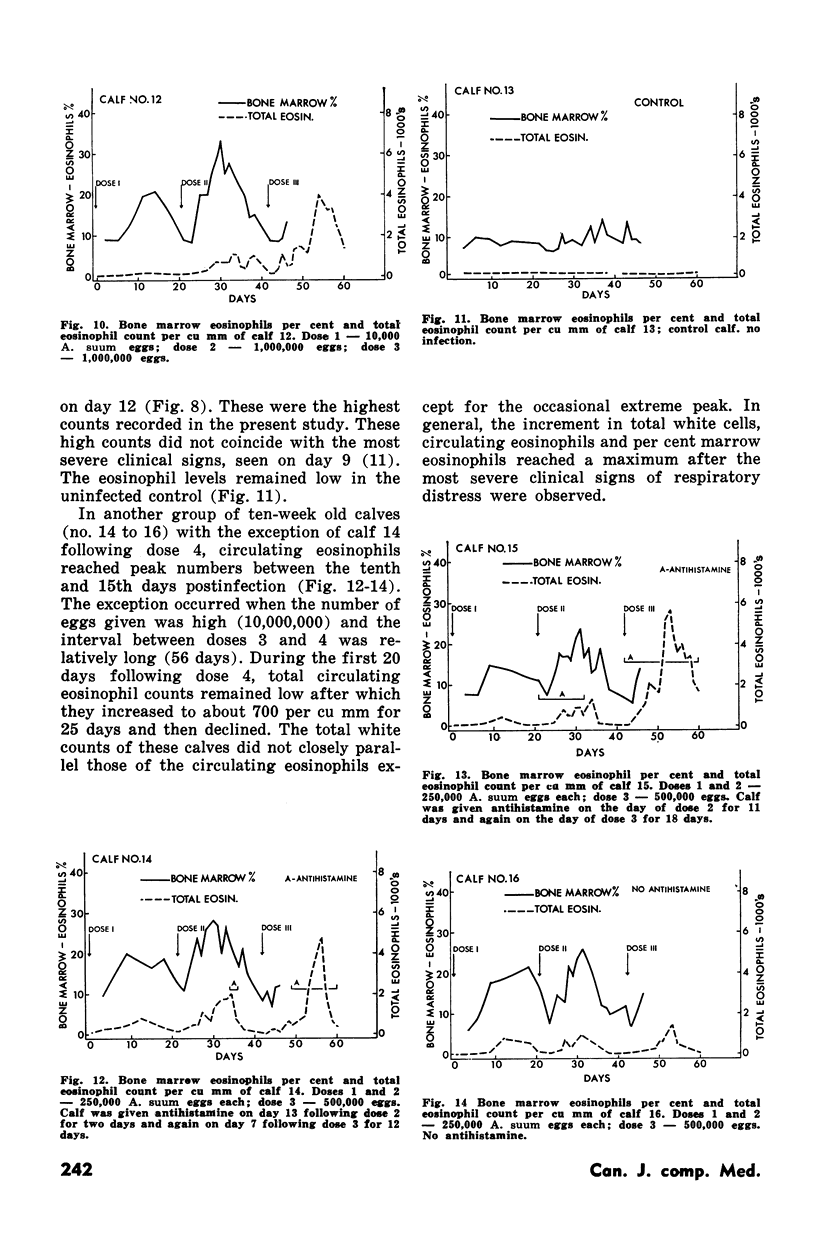
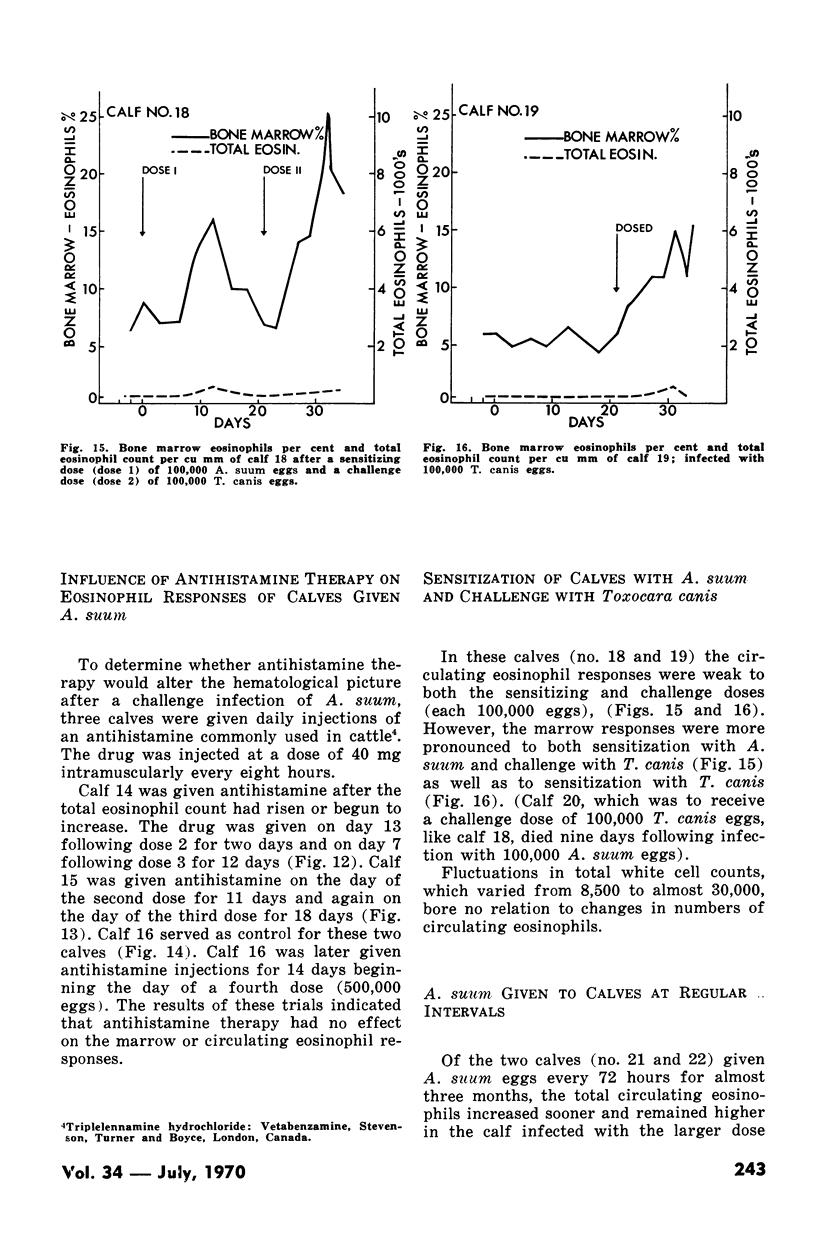
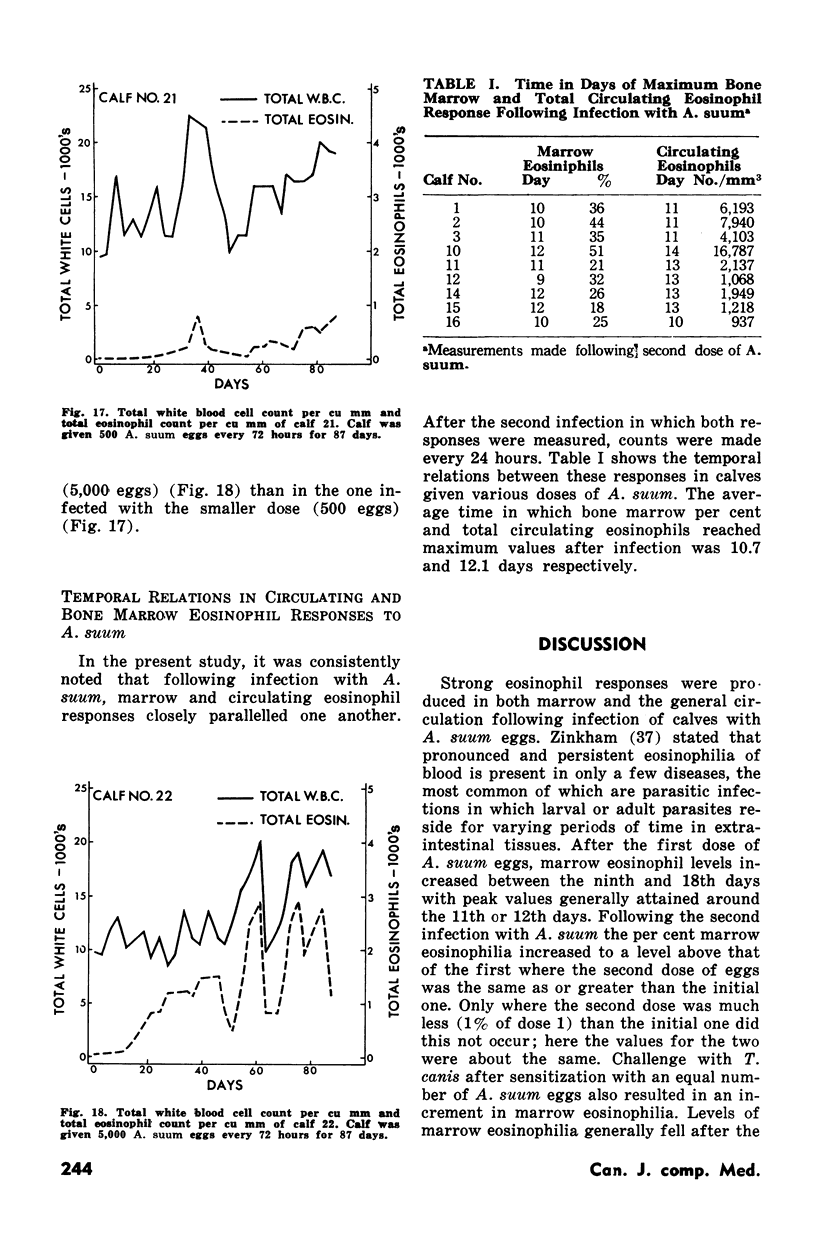
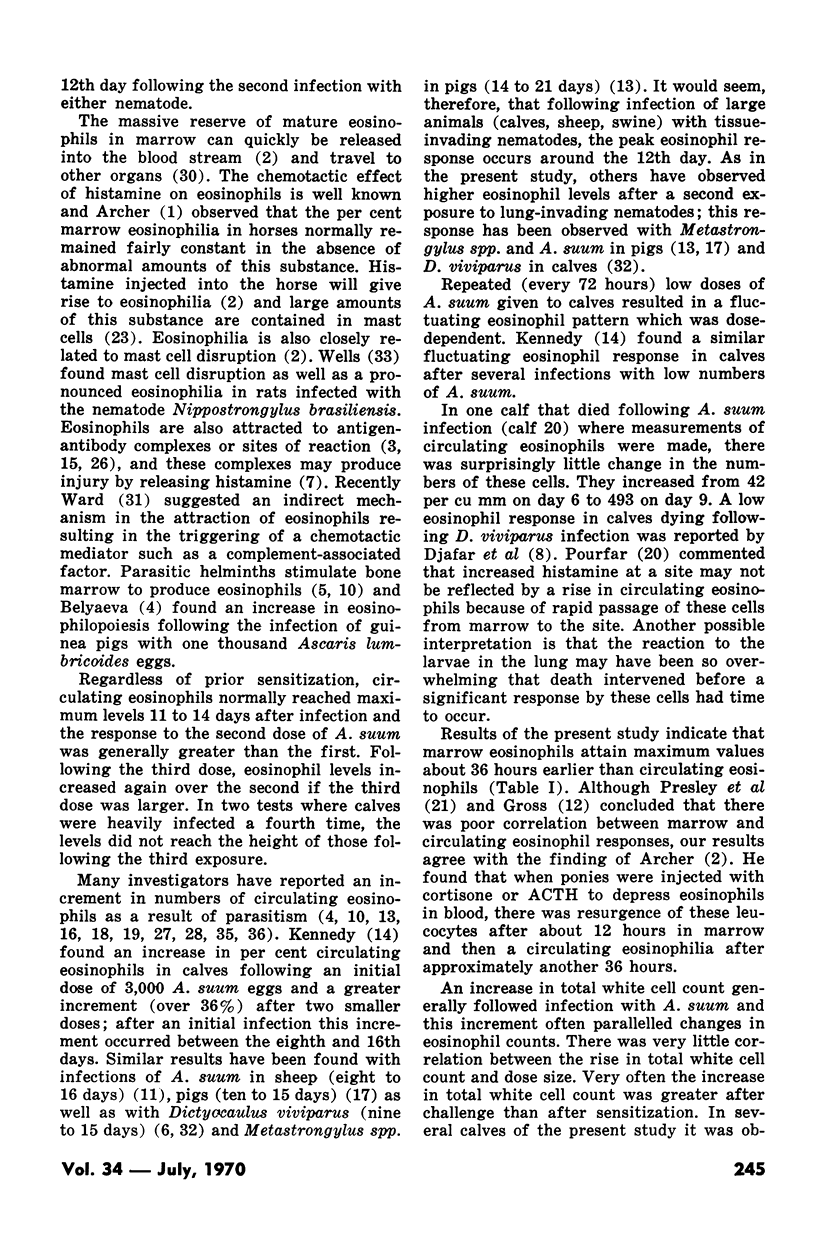
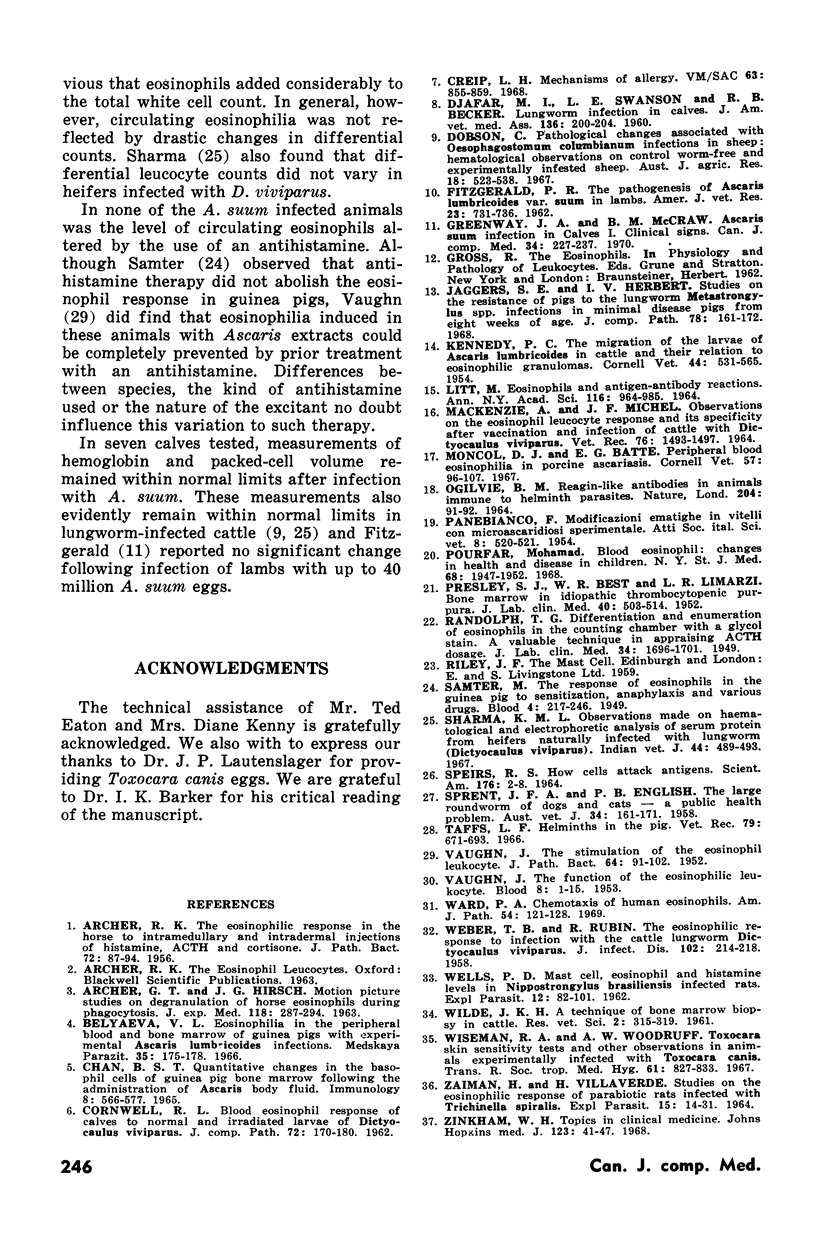
Selected References
These references are in PubMed. This may not be the complete list of references from this article.
- ARCHER G. T., HIRSCH J. G. MOTION PICTURE STUDIES ON DEGRANULATION OF HORSE EOSINOPHILS DURING PHAGOCYTOSIS. J Exp Med. 1963 Aug 1;118:287–294. doi: 10.1084/jem.118.2.287. [DOI] [PMC free article] [PubMed] [Google Scholar]
- ARCHER R. K. The eosinophilic response in the horse to intramedullary and intradermal injections of histamine, ACTH, and cortisone. J Pathol Bacteriol. 1956 Jul;72(1):87–94. doi: 10.1002/path.1700720112. [DOI] [PubMed] [Google Scholar]
- CORNWELL R. L. Blood eosinophil response of calves to normal and irradiated larvae of Dictyocaulus viviparus. J Comp Pathol. 1962 Apr;72:170–180. [PubMed] [Google Scholar]
- Chan B. S. Quantitative changes in the basophil cells of guinea-pig bone marrow following the administration of Ascaris body fluid. Immunology. 1965 Jun;8(6):566–577. [PMC free article] [PubMed] [Google Scholar]
- DJAFAR M. I., SWANSON L. E., BECKER R. B. Clinical and hematologic studies on pure Dictyocaulus viviparus (Bloch) lungworm infections in calves. J Am Vet Med Assoc. 1960 Mar 1;136:200–204. [PubMed] [Google Scholar]
- Greenway J. A., McCraw B. M. Ascaris suum infection in calves. I. Clinical signs. Can J Comp Med. 1970 Jul;34(3):227–237. [PMC free article] [PubMed] [Google Scholar]
- Jaggers S. E., Herbert I. V. Studies on the resistance of pigs to the lungworm Metastrongylus spp. Infections in minimal disease pigs from eight weeks of age. J Comp Pathol. 1968 Apr;78(2):161–172. doi: 10.1016/0021-9975(68)90092-3. [DOI] [PubMed] [Google Scholar]
- KENNEDY P. C. The migrations of the larvae of Ascaris lumbricoides in cattle and their relation to eosinophilic granulomas. Cornell Vet. 1954 Oct;44(4):531–565. [PubMed] [Google Scholar]
- LITT M. EOSINOPHILS AND ANTIGEN-ANTIBODY REACTIONS. Ann N Y Acad Sci. 1964 Aug 27;116:964–985. doi: 10.1111/j.1749-6632.1964.tb52562.x. [DOI] [PubMed] [Google Scholar]
- Moncol D. J., Batte E. G. Peripheral blood eosinophilia in porcine ascariasis. Cornell Vet. 1967 Jan;57(1):96–106. [PubMed] [Google Scholar]
- OGILVIE B. M. REAGIN-LIKE ANTIBODIES IN ANIMALS IMMUNE TO HELMINTH PARASITES. Nature. 1964 Oct 3;204:91–92. doi: 10.1038/204091a0. [DOI] [PubMed] [Google Scholar]
- PRESLEY S. J., BEST W. R., LIMARZI L. R. Bone marrow in idiopathic thrombocytopenic purpura; analysis of 100 cases with reference to the prognostic significance of eosinophils and megakaryocytes. J Lab Clin Med. 1952 Oct;40(4):503–514. [PubMed] [Google Scholar]
- Pourfar M. Blood eosinophil. Changes in health and disease in children. N Y State J Med. 1968 Jul 15;68(14):1947–1952. [PubMed] [Google Scholar]
- Sharma K. M. Observations made on haematological and electrophoretic analysis of serum protein from heifers naturally infected with lung worm (Dictyocaulus viviparus). Indian Vet J. 1967 Jun;44(6):489–493. [PubMed] [Google Scholar]
- VAUGHN J. The function of the eosinophile leukocyte. Blood. 1953 Jan;8(1):1–15. [PubMed] [Google Scholar]
- VAUGHN J. The stimulation of the eosinophil leucocyte. J Pathol Bacteriol. 1952 Jan;64(1):91–102. doi: 10.1002/path.1700640111. [DOI] [PubMed] [Google Scholar]
- WEBER T. B., RUBIN R. The eosinophilic response to infection with the cattle lungworm, Dictyocaulus viviparus. J Infect Dis. 1958 May-Jun;102(3):214–218. doi: 10.1093/infdis/102.3.214. [DOI] [PubMed] [Google Scholar]
- WELLS P. D. Mast cell, eosinophil and histamine levels in Nippostrongylus brasiliensis infected rats. Exp Parasitol. 1962 Apr;12:82–101. doi: 10.1016/s0014-4894(62)80002-2. [DOI] [PubMed] [Google Scholar]
- Ward P. A. Chemotaxis of human eosinophils. Am J Pathol. 1969 Jan;54(1):121–128. [PMC free article] [PubMed] [Google Scholar]
- Wiseman R. A., Woodruff A. W. Toxocara skin sensitivity tests and other observations in animals experimentally infected with Toxocara canis. Trans R Soc Trop Med Hyg. 1967;61(6):827–833. doi: 10.1016/0035-9203(67)90042-9. [DOI] [PubMed] [Google Scholar]
- ZAIMAN H., VILLAVERDE H. STUDIES ON THE EOSINOPHILIC RESPONSE OF PARABIOTIC RATS INFECTED WITH TRICHINELLA SPIRALIS. Exp Parasitol. 1964 Feb;15:14–31. doi: 10.1016/0014-4894(64)90004-9. [DOI] [PubMed] [Google Scholar]
- Zinkham W. H. Visceral larva migrans due to Toxocara as a cause of eosinophilia. Johns Hopkins Med J. 1968 Jul;123(1):41–47. [PubMed] [Google Scholar]


